Improved Research on Two-Step Thermal Stress Calculation Method for Asphalt Mixture: Extended Creep Compliance Test
Abstract
:1. Introduction
2. Materials and Tests
2.1. Materials
2.2. IDT Creep and Strength Test
2.3. Thermal Stress-Restrained Specimen Test (TSRST)
3. Thermal Stress Calculation Method
4. Original TTSCM Results
4.1. Creep Compliance
4.2. Relaxation Modulus Master Curves
4.3. Calculated Thermal Stress and Strength Curves
4.4. TSRST Method
4.5. Variance Analysis
5. Modified TTSCM Results
5.1. ECCT Method
5.2. Modified Calculated Thermal Stress
5.3. In-Depth Analysis
5.4. Recommendation
6. Conclusions
- (1)
- For specific conditions and materials, the original TTSCM can produce inaccurate prediction results. For example, in this study the predicted cracking temperature of the AC-16 asphalt mixture using this method is −26.4 °C, which is 2.9 °C (−10.6%) higher than the measured value by the TSRST.
- (2)
- This study developed an ECCT method by adding creep compliance data under high temperatures to the modified GM model to improve the prediction accuracy of the TTSCM. This study shows that the predicted cracking temperatures modified by the ECCT method for the AC-16 and AC-25 asphalt mixtures are both within ±2% error, implying a high accuracy.
- (3)
- The ECCT method can increase the predicted thermal stresses at high temperatures, but it can decrease them at low temperatures. However, the predicted thermal stresses modified using this method conformed to a common changing pattern with respect to the initial temperature and cooling rate. Finally, it is recommended that the adding temperature of the extended relaxation modulus test be consistent with the initial temperature of the TTSCM, and the time span of creep compliance should be more than the time intervals of the TTSCM.
Author Contributions
Funding
Institutional Review Board Statement
Informed Consent Statement
Data Availability Statement
Conflicts of Interest
References
- Arslan, D.; Gürü, M.; Çubuk, M.K. Improvement of Hot Mix Asphalt Performance in Cold Regions by Organic-Based Synthetic Compounds. Cold Reg. Sci. Technol. 2013, 85, 250–255. [Google Scholar] [CrossRef]
- Islam, M.R.; Rahman, A.S.M.A.; Tarefder, R.A. Open Graded Friction Course in Resisting Low-Temperature Transverse Cracking in Asphalt Pavement. J. Cold Reg. Eng. 2018, 32, 04018006. [Google Scholar] [CrossRef]
- Judycki, J.; Jaskula, P.; Dolzycki, B.; Pszczola, M.; Jaczewski, M.; Rys, D.; Stienss, M. The Impact of Homogeneity of High Modulus Asphalt Concrete Layer on Low-Temperature Cracking. In 8th Rilem International Conference on Mechanisms of Cracking and Debonding in Pavements; Chabot, A., Buttlar, W.G., Dave, E.V., Petit, C., Tebaldi, G., Eds.; Springer: Dordrecht, The Netherlands, 2016; Volume 13, pp. 319–326. [Google Scholar]
- Krcmarik, M.; Varma, S.; Kutay, M.E.; Jamrah, A. Development of Predictive Models for Low-Temperature Indirect Tensile Strength of Asphalt Mixtures. J. Mater. Civ. Eng. 2016, 28, 04016139. [Google Scholar] [CrossRef]
- Moon, K.H.; Marasteanu, M.O.; Turos, M. Comparison of Thermal Stresses Calculated from Asphalt Binder and Asphalt Mixture Creep Tests. J. Mater. Civ. Eng. 2013, 25, 1059–1067. [Google Scholar] [CrossRef]
- Li, Z.S.; Tan, Y.Q. Low-Temperature Cracking Analysis of Asphalt Pavement. AMM 2013, 361–363, 1625–1628. [Google Scholar] [CrossRef]
- Falchetto, A.C.; Moon, K.H.; Wistuba, M.P. An Alternative Method for Computing Thermal Stress in Asphalt Mixture: The Laplace Transformation. Road Mater. Pavement Des. 2017, 18, 226–240. [Google Scholar] [CrossRef]
- Moon, K.H.; Kwon, O.S.; Cho, M.J.; Cannone, F.A. An Alternative One-Step Computation Approach for Computing Thermal Stress of Asphalt Mixture: The Laplace Transformation. KSCE J. Civ. Environ. Eng. Res. 2019, 39, 219–225. [Google Scholar] [CrossRef]
- Falchetto, A.C.; Moon, K.H. Comparisons of Analytical and Approximate Interconversion Methods for Thermal Stress Computation. Can. J. Civ. Eng. 2015, 42, 705–719. [Google Scholar] [CrossRef]
- Moon, K.H.; Cannone Falchetto, A.; Hu, J.W. Investigation of Asphalt Binder and Asphalt Mixture Low Temperature Creep Properties Using Semi Mechanical and Analogical Models. Constr. Build. Mater. 2014, 53, 568–583. [Google Scholar] [CrossRef]
- Benedetto, H.D.; Sauzéat, C.; Sohm, J. Stiffness of Bituminous Mixtures Using Ultrasonic Wave Propagation. Road Mater. Pavement Des. 2009, 10, 789–814. [Google Scholar] [CrossRef]
- Falchetto, A.C.; Marasteanu, M.O.; Balmurugan, S.; Negulescu, I.I. Investigation of Asphalt Mixture Strength at Low Temperatures with the Bending Beam Rheometer. Road Mater. Pavement Des. 2014, 15, 28–44. [Google Scholar] [CrossRef]
- Cannone Falchetto, A.; Le, J.-L.; Turos, M.I.; Marasteanu, M.O. Indirect Determination of Size Effect on Strength of Asphalt Mixtures at Low Temperatures. Mater Struct 2014, 47, 157–169. [Google Scholar] [CrossRef]
- Zofka, A.; Marasteanu, M.; Turos, M. Investigation of Asphalt Mixture Creep Compliance at Low Temperatures. Road Mater. Pavement Des. 2008, 9, 269–285. [Google Scholar] [CrossRef]
- Hill, B.; Oldham, D.; Behnia, B.; Fini, E.H.; Buttlar, W.G.; Reis, H. Evaluation of Low Temperature Viscoelastic Properties and Fracture Behavior of Bio-Asphalt Mixtures. Int. J. Pavement Eng. 2018, 19, 362–369. [Google Scholar] [CrossRef]
- Liu, S.; Shi, C.; Wang, T.; Yang, J.; Chen, X. Development of a New Modified TSRST Test to Measure the Thermal Stress of Asphalt Supporting Layer in the Slab Track System. Measurement 2023, 207, 112422. [Google Scholar] [CrossRef]
- Pszczola, M.; Rys, D.; Jaczewski, M. Field Evaluation of High Modulus Asphalt Concrete Resistance to Low-Temperature Cracking. Materials 2022, 15, 369. [Google Scholar] [CrossRef] [PubMed]
- Keshavarzi, B.; Kim, Y.R. A Dissipated Pseudo Strain Energy-Based Failure Criterion for Thermal Cracking and Its Verification Using Thermal Stress Restrained Specimen Tests. Constr. Build. Mater. 2020, 233, 117199. [Google Scholar] [CrossRef]
- JTG F40; Technical Specifications for Construction of Highway Asphalt Pavements. Renmin Communication Press: Beijing, China, 2004.
- Lv, S.; Xia, C.; Liu, C.; Zheng, J.; Zhang, F. Fatigue Equation for Asphalt Mixture under Low Temperature and Low Loading Frequency Conditions. Constr. Build. Mater. 2019, 211, 1085–1093. [Google Scholar] [CrossRef]
- AASHTO T 322; Standard Method of Test for Determining the Creep Compliance and Strength of Hot Mix Asphalt Using the Indirect Tensile Test Device. American Association of State Highway and Transportation Officials: Washington, DC, USA, 2020.
- BS EN 12697-46; Low Temperature Cracking and Properties by Uniaxial Tension Tests. British Standards Institution: London, UK, 2020.
- Pszczola, M.; Szydlowski, C.; Jaczewski, M. Influence of Cooling Rate and Additives on Low-Temperature Properties of Asphalt Mixtures in the TSRST. Constr. Build. Mater. 2019, 204, 399–409. [Google Scholar] [CrossRef]
- Stienss, M.; Szydlowski, C. Influence of Selected Warm Mix Asphalt Additives on Cracking Susceptibility of Asphalt Mixtures. Materials 2020, 13, 202. [Google Scholar] [CrossRef]
- Kim, Y.R. (Ed.) Modeling of Asphalt Concrete; McGraw-Hill Construction, ASCE Press, McGraw-Hill: Reston, VA, USA; New York, NY, USA, 2009; ISBN 978-0-07-146462-8. [Google Scholar]
- Forough, S.A.; Nejad, F.M.; Khodaii, A. A Comparative Study of Temperature Shifting Techniques for Construction of Relaxation Modulus Master Curve of Asphalt Mixes. Constr. Build. Mater. 2014, 53, 74–82. [Google Scholar] [CrossRef]
- Bao, W.; Li, P.; Shen, A.; Guo, Y. Thermal Stress Analysis of Low Penetration Asphalt Binder Based on Viscoelastic Principle. J. Build. Mater. 2016, 19, 702–705. [Google Scholar] [CrossRef]
- Jalocha, D.; Constantinescu, A.; Neviere, R. Revisiting the Identification of Generalized Maxwell Models from Experimental Results. Int. J. Solids Struct. 2015, 67–68, 169–181. [Google Scholar] [CrossRef]
- Qadir, A. Investigation of Glass Transition Temperature of Asphalt Concrete. J. Test. Eval. 2017, 45, 1680–1690. [Google Scholar] [CrossRef]
- Daoudi, A.; Perraton, D.; Dony, A.; Carter, A. From Complex Modulus E* to Creep Compliance D(t): Experimental and Modeling Study. Materials 2020, 13, 1945. [Google Scholar] [CrossRef] [PubMed]
- Kim, J.; Sholar, G.A.; Kim, S. Determination of Accurate Creep Compliance and Relaxation Modulus at a Single Temperature for Viscoelastic Solids. J. Mater. Civ. Eng. 2008, 20, 147–156. [Google Scholar] [CrossRef]
- Lee, H.-J.; Kim, Y.R. Viscoelastic Constitutive Model for Asphalt Concrete under Cyclic Loading. J. Eng. Mech. 1998, 124, 32–40. [Google Scholar] [CrossRef]
- Zhang, W.; Cui, B.; Gu, X.; Dong, Q. Comparison of Relaxation Modulus Converted from Frequency- and Time-Dependent Viscoelastic Functions through Numerical Methods. Appl. Sci. 2018, 8, 2447. [Google Scholar] [CrossRef]
- Padala, S.K.; Swamy, A.K.; Bhattacharjee, B. Development of Temperature Differential Maps for Rigid Pavements in Tropical Climates for Quick Estimation of Thermal Stresses. Int. J. Pavement Eng. 2023, 24, 2246627. [Google Scholar] [CrossRef]
- Tai Nguyen, H.T.; Do, T.-T.; Tran, V.-T.; Phan, T.-N.; Pham, T.-A.; Nguyen, M.L. Determination of Creep Compliance of Asphalt Mixtures at Intermediate and High Temperature Using Creep-Recovery Test. Road Mater. Pavement Des. 2021, 22, S514–S535. [Google Scholar] [CrossRef]
- Cannone Falchetto, A.; Moon, K.H.; Wang, D.; Park, H.-W. A Modified Rheological Model for the Dynamic Modulus of Asphalt Mixtures. Can. J. Civ. Eng. 2021, 48, 328–340. [Google Scholar] [CrossRef]


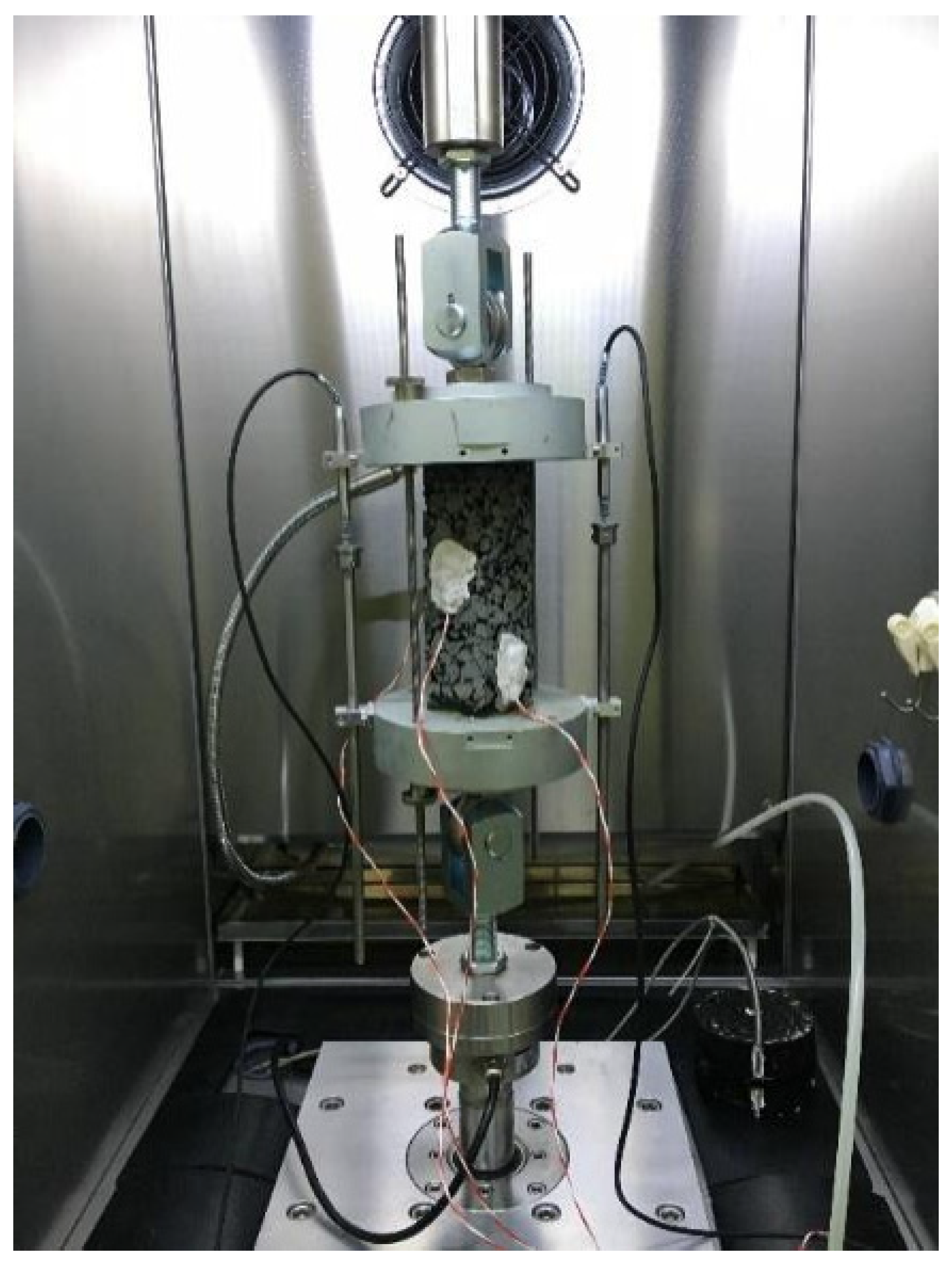
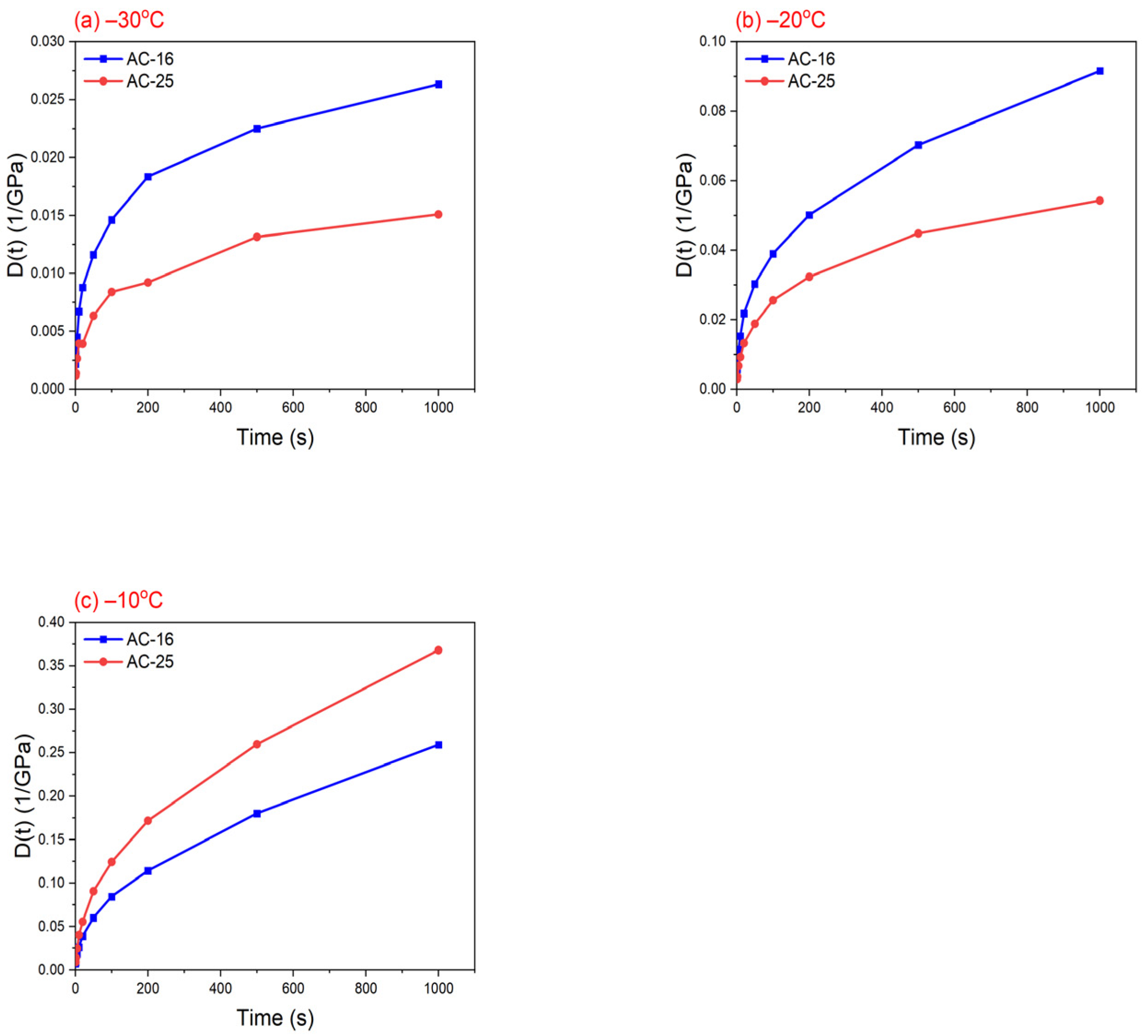
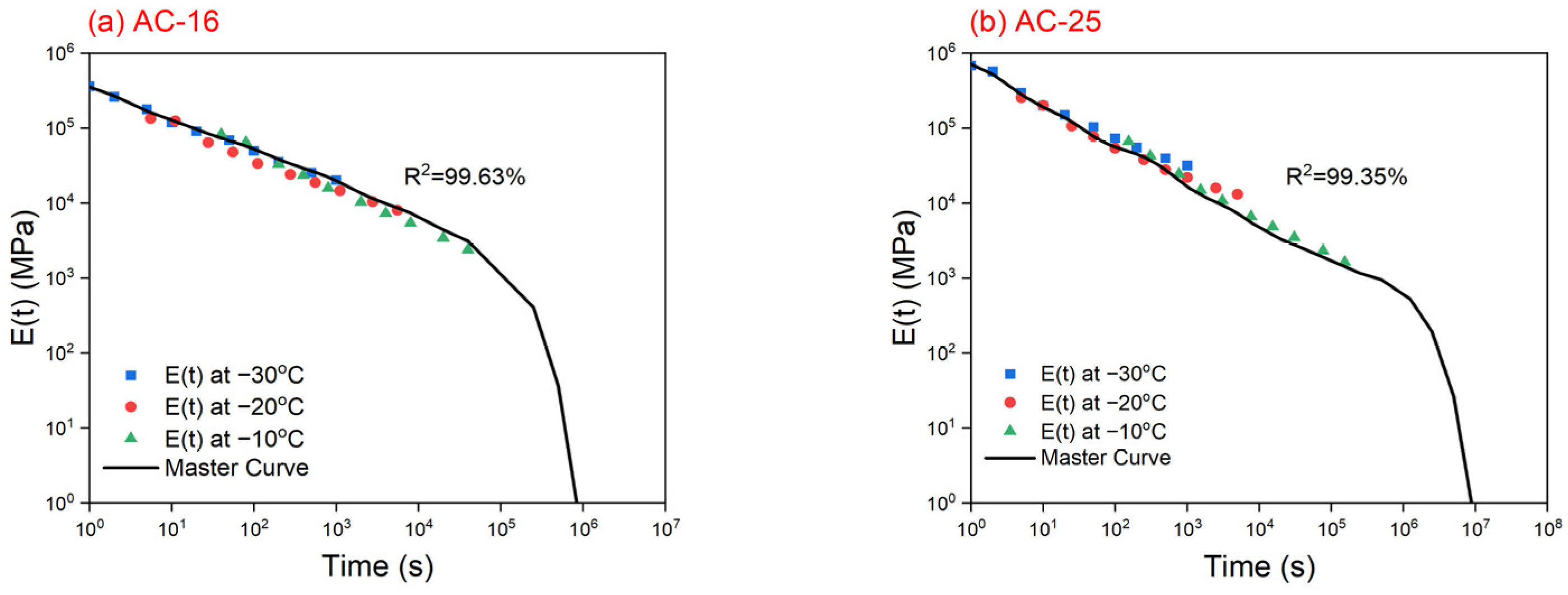

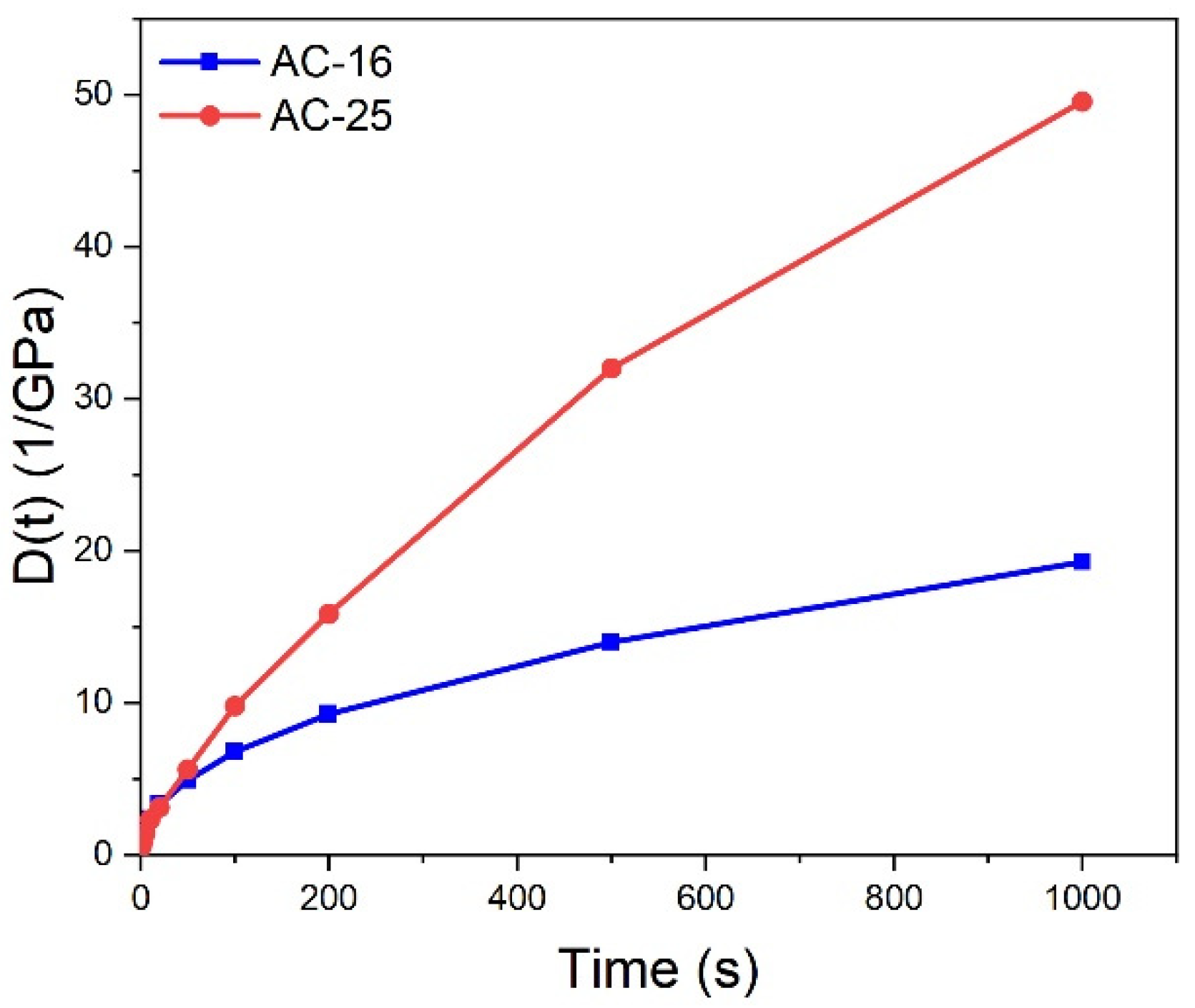
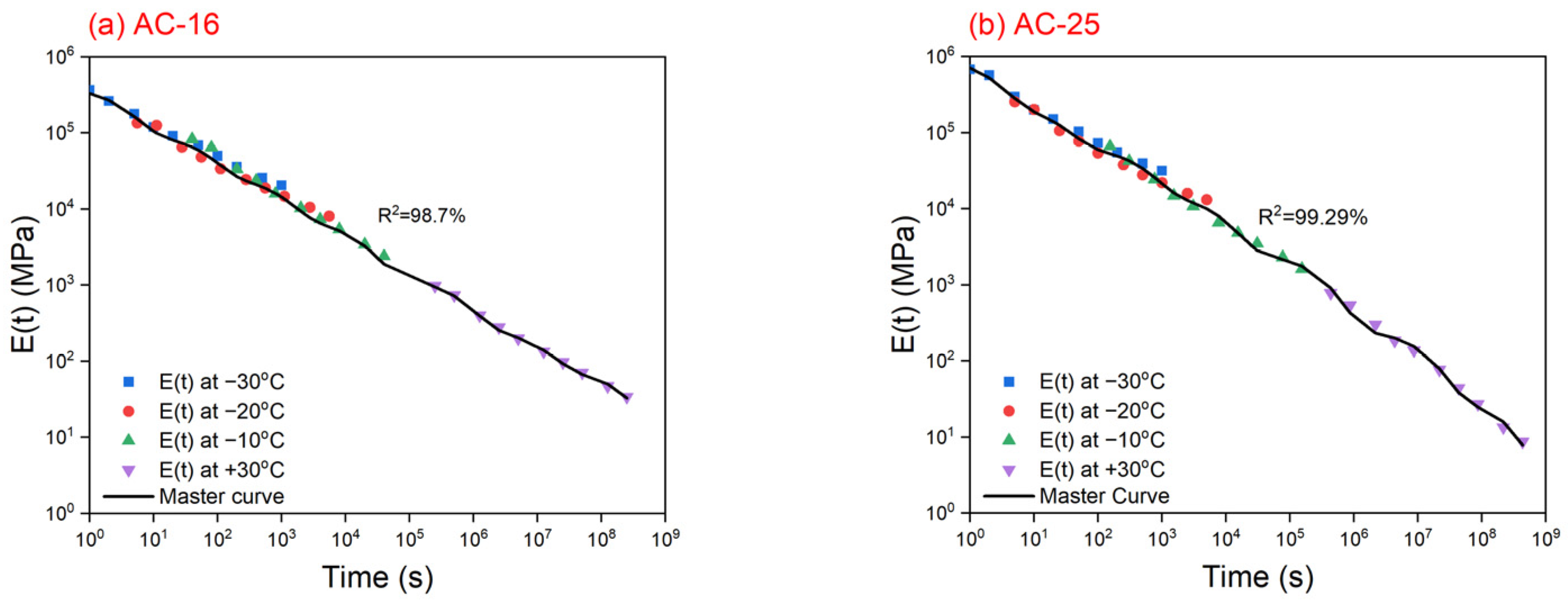

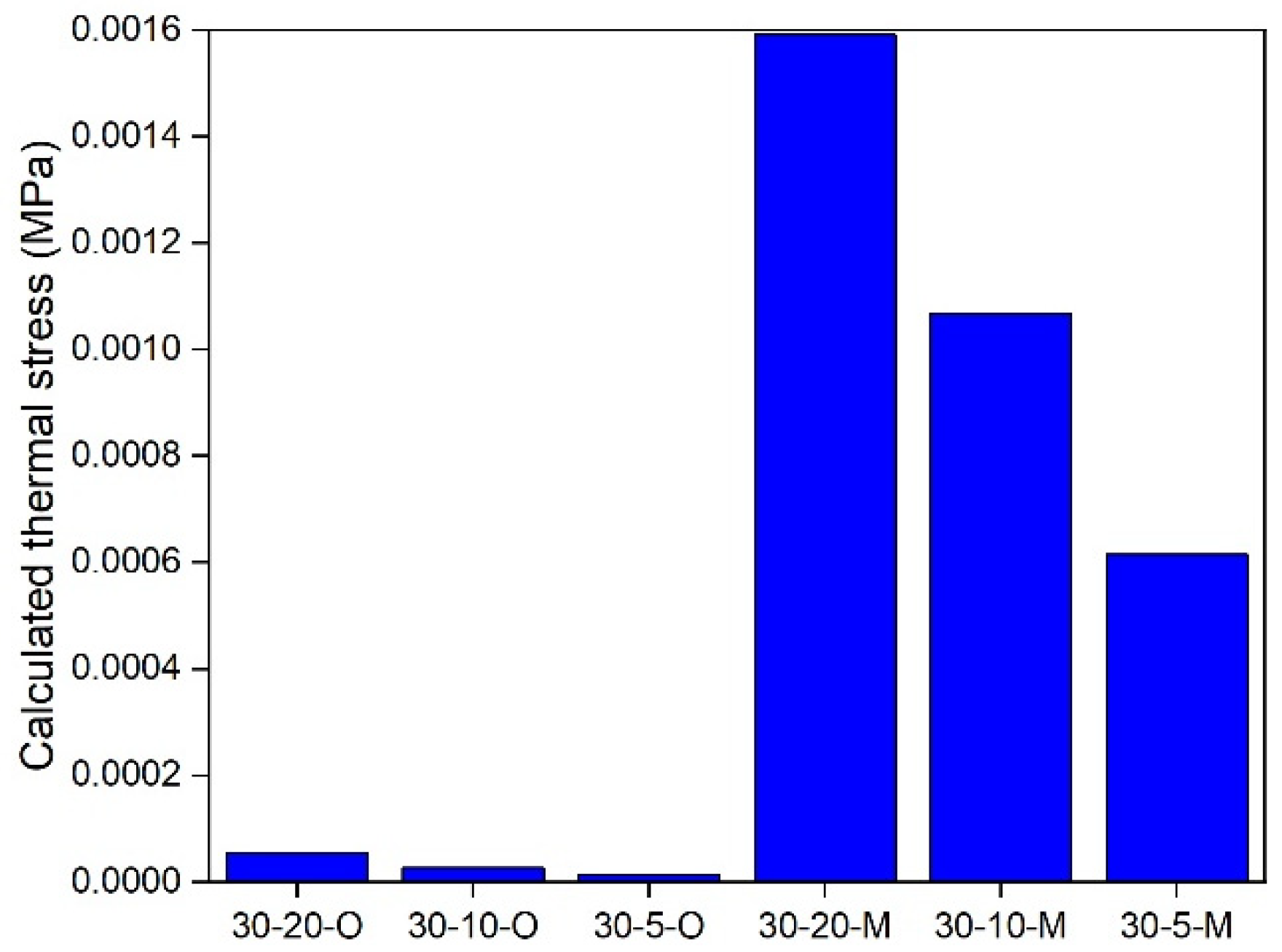
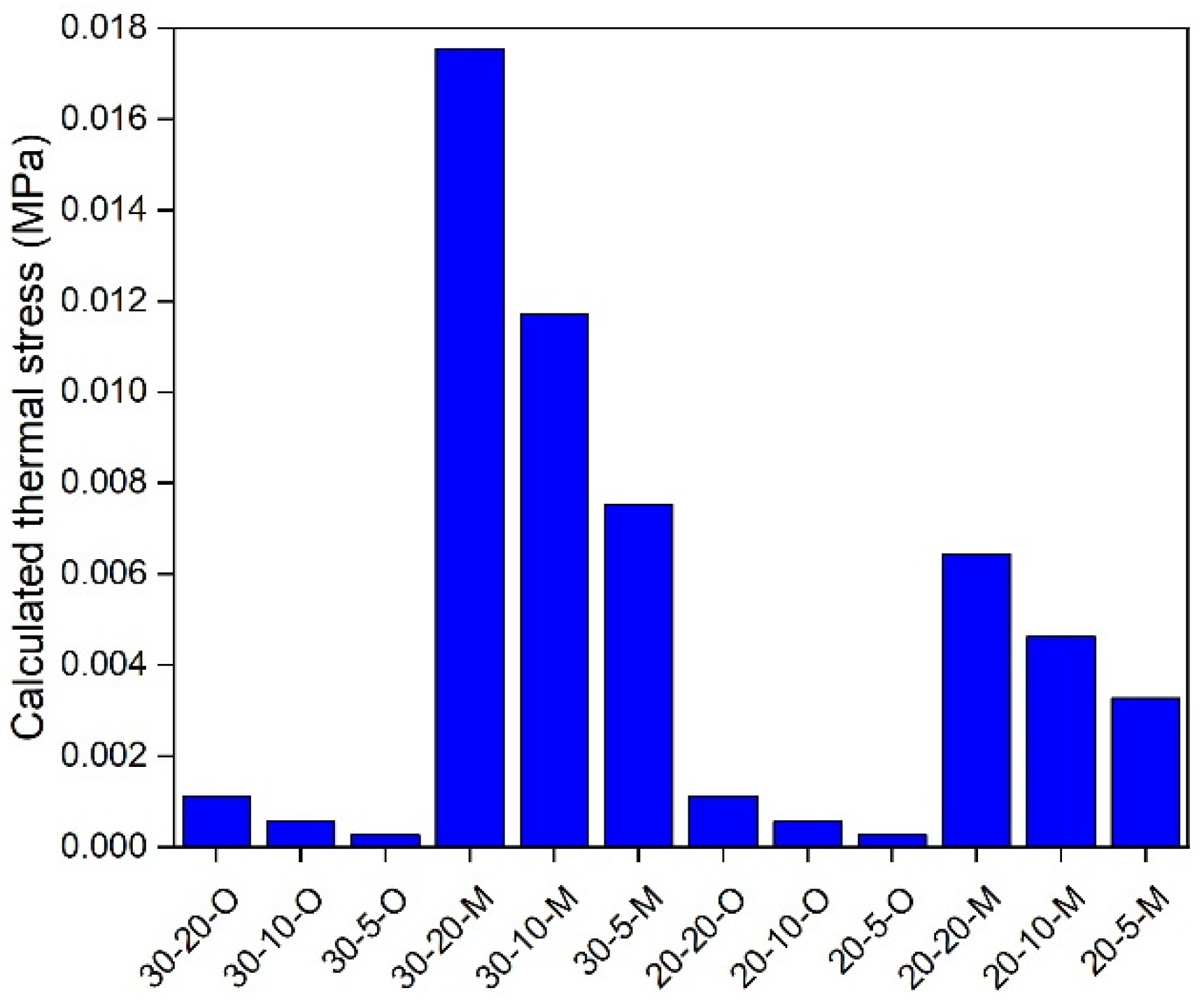
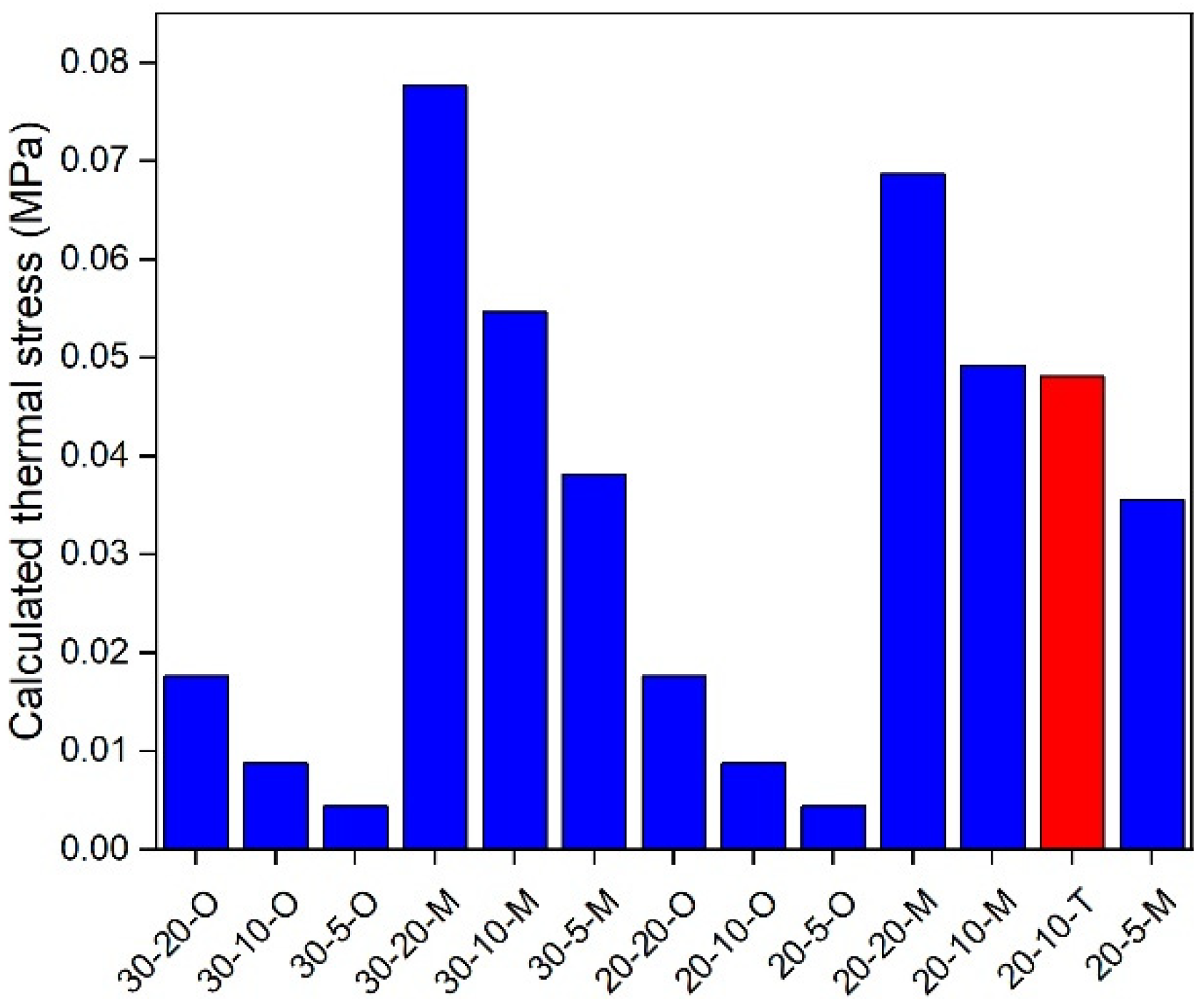
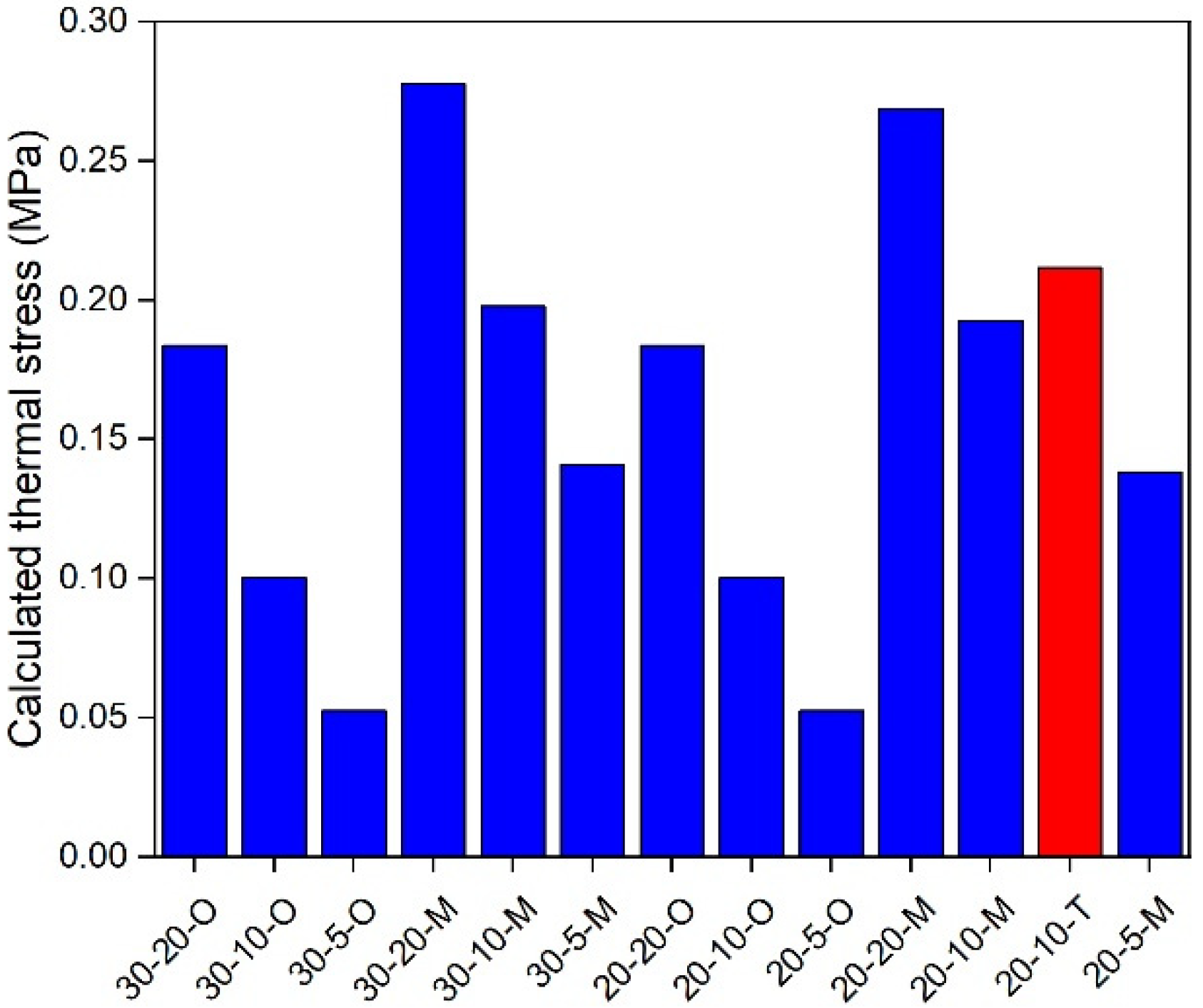

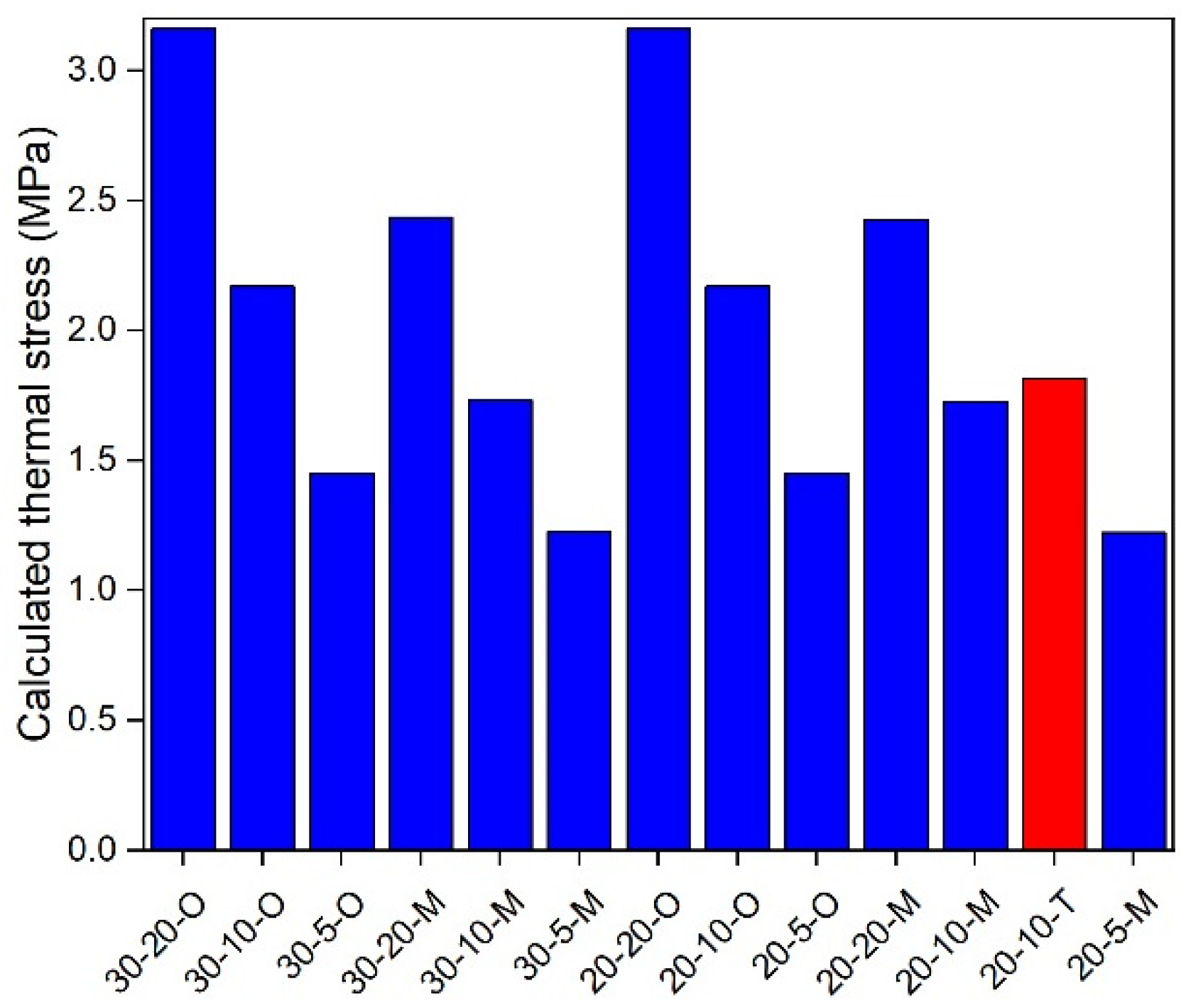
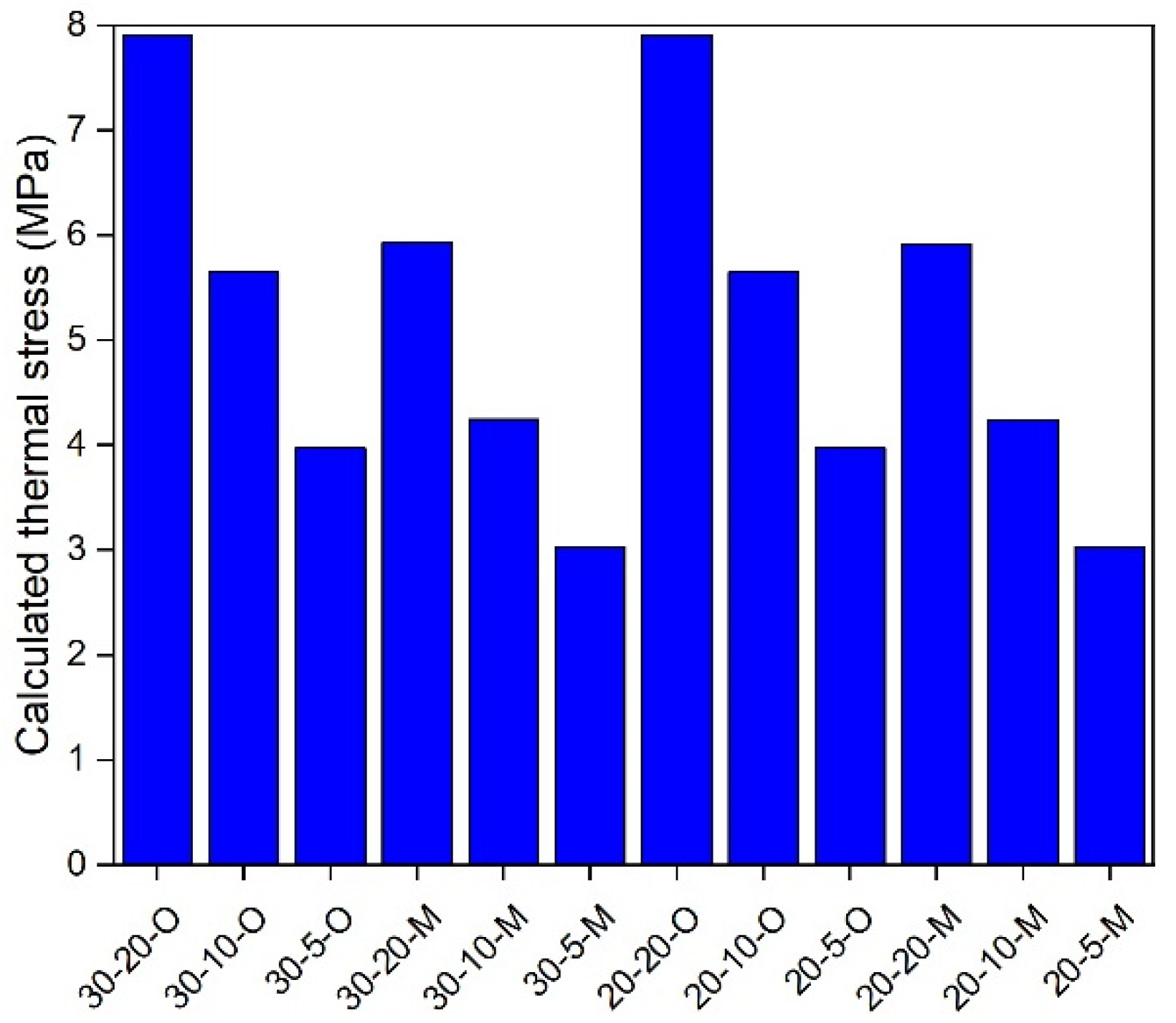
| Properties | Unit | Tested Values | Requirements | Specification [19] |
|---|---|---|---|---|
| Penetration | 0.1 mm | 66 | 60–80 | T0604 |
| Penetration index | - | 0.98 | ≥0.4 | T0604 |
| Ductility | cm | 43 | ≥30 | T0605 |
| Softening point | °C | 70.1 | ≥55 | T0606 |
| Properties | Unit | Tested Values | Requirements | Specification [19] |
|---|---|---|---|---|
| Penetration | 0.1 mm | 105 | 100–120 | T0604 |
| Penetration index | - | −1.31 | −1.5–+1.0 | T0604 |
| Ductility | cm | 80 | ≥40 | T0605 |
| Softening point | °C | 46.6 | ≥43 | T0606 |
| Materials | Temperature (°C) | Correlation Coefficient R2 | n | D0 (1/GPa/s) |
|---|---|---|---|---|
| AC-16 | −30 | 0.9816 | 0.3615 | 0.0026 |
| −20 | 0.9900 | 0.4197 | 0.0055 | |
| −10 | 0.9972 | 0.515 | 0.0077 | |
| AC-25 | −30 | 0.9948 | 0.3786 | 0.0013 |
| −20 | 0.9879 | 0.4385 | 0.0031 | |
| −10 | 0.9749 | 0.53 | 0.0104 |
| Materials | a0 | a1 | a2 |
|---|---|---|---|
| AC-16 | 2.5714821 | 0.102559929 | 0.0005614 |
| AC-25 | 4.113412 | 0.23789485 | 0.0033592 |
| AC-16 | AC-25 | ||
|---|---|---|---|
| (MPa) | (s) | (MPa) | (s) |
| 4487.86 | 104,000 | 1409.64 | 1,260,000 |
| 8861.79 | 7880 | 2948.62 | 41,600 |
| 310,711.91 | 1.65 | 755,721.20 | 2.01 |
| 25,423.99 | 830 | 11,315.63 | 4020 |
| 104,341.69 | 10.8 | 193,891.60 | 20.8 |
| 53,159.19 | 87.2 | 51,050.31 | 375 |
| Materials | Cracking Temperature (°C) | Failure Stress (MPa) |
|---|---|---|
| AC-16 | −29.3 | 3.9 |
| AC-25 | −27.3 | 3.5 |
| Materials | Predicted Cracking Temperatures (°C) | Measured Cracking Temperatures (°C) |
|---|---|---|
| AC-16 | −26.4 | −29.3 |
| AC-25 | −28.2 | −27.3 |
| Materials | Temperature (°C) | Correlation Coefficient R2 | n | D0 (1/GPa/s) |
|---|---|---|---|---|
| AC-16 | +30 | 0.9967 | 0.4854 | 0.7118 |
| AC-25 | +30 | 0.997 | 0.6548 | 0.4994 |
| AC-16 | AC-25 | ||
|---|---|---|---|
| (MPa) | (s) | (MPa) | (s) |
| 76.31846996 | 296,697,543 | 32.152611 | 307,446,242.6 |
| 196.0472279 | 11,514,043 | 229.51479 | 14,033,219.23 |
| 310,194.5409 | 3.3348825 | 748,302.48 | 2.176162918 |
| 998.7223319 | 641,250.84 | 2370.6892 | 337,049.4659 |
| 20,310.38025 | 974.19383 | 49,870.711 | 511.9427406 |
| 6080.484499 | 18,160.205 | 13,141.398 | 8743.14716 |
| 71,984.08669 | 62.080632 | 174,116.97 | 24.20942642 |
| Materials | Modified Predicted Cracking Temperatures (°C) | Measured Cracking Temperatures (°C) |
|---|---|---|
| AC-16 | −29.6 | −29.3 |
| AC-25 | −26.8 | −27.3 |
Disclaimer/Publisher’s Note: The statements, opinions and data contained in all publications are solely those of the individual author(s) and contributor(s) and not of MDPI and/or the editor(s). MDPI and/or the editor(s) disclaim responsibility for any injury to people or property resulting from any ideas, methods, instructions or products referred to in the content. |
© 2024 by the authors. Licensee MDPI, Basel, Switzerland. This article is an open access article distributed under the terms and conditions of the Creative Commons Attribution (CC BY) license (https://creativecommons.org/licenses/by/4.0/).
Share and Cite
He, X.; Li, P.; Lin, B.; Jiang, S. Improved Research on Two-Step Thermal Stress Calculation Method for Asphalt Mixture: Extended Creep Compliance Test. Materials 2024, 17, 2939. https://doi.org/10.3390/ma17122939
He X, Li P, Lin B, Jiang S. Improved Research on Two-Step Thermal Stress Calculation Method for Asphalt Mixture: Extended Creep Compliance Test. Materials. 2024; 17(12):2939. https://doi.org/10.3390/ma17122939
Chicago/Turabian StyleHe, Xu, Peng Li, Bo Lin, and Shuangquan Jiang. 2024. "Improved Research on Two-Step Thermal Stress Calculation Method for Asphalt Mixture: Extended Creep Compliance Test" Materials 17, no. 12: 2939. https://doi.org/10.3390/ma17122939





